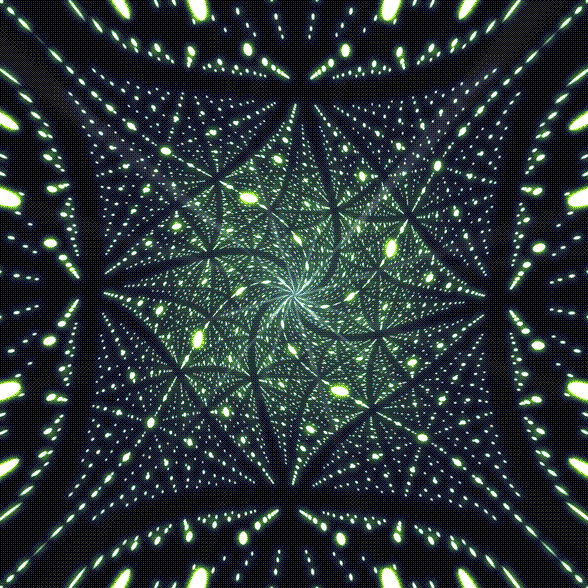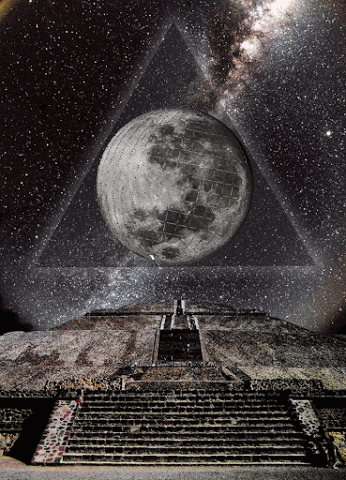According to one long lasting legend, chess was invented in the epoch of 1000 BC, by an unknown Egyptian/Khemetic mathematician, who doubled down the invention deemed the mathematical operation of exponentiation. Truly cerebral stimulation...
When the reigning ruling regent Vizier asked this innovator what his reward request for the game chess the mathematician replied, "Let's put on the first square of the chessboard, one grain, the second - two on the third - four, and so on. So Viceroy grant me the amount of grain that happens, upon fulfilling all 64 squares. " The Regent was delighted, calculating/approximating 2 to 3 satchels however, if you calculate 2 to the 64th degree - this number tallies more than all the grain provisions worldwide.
.jpg)
Aditional ancient theorems rewind the creation of chess to the 2nd-3rd millennium BC, derived by archaeological discoveries in Sumer, Mesopotamia, and Kush. However, since there are exists no references in the aforementioned nations literary archives until 570 BC, many historians recognize this timeframe as the birthmark/manifestation of chess. To this specific the game of chess was documented in a Persian poem (600 BC), that spawns a referenced referral to the invention of chess in India.
The oldest form of chess - is the militarized game Chaturanga (sanskrit)- apparitioning during the first century BC. In India, the warrior system Chaturanga (meaning troops), included chariots (ratha), elephants (hasti), cavalry (asva), and foot soldiers (padati).
Chaturanga's form symbolized battlefield formations with four arms, which were
directed by four leaders/generals. The locations of the corners ( 64-square board) was represented by 4 people. Movement/travel of game pieces were determined by tossing dice. Chaturanga existed in India until the early 20th century and eventually became known as "chaturradzha" - a game of four kings, while game figurines were painted in four colors - black, red, yellow, and green.
Chaturanga was the successor to the chess form shatrang (chatrang), that originated in Central Asia at the end of 5th century. This form had two "camps" of figures and a new figure displayed as an advisor to King Farzin, played by two opponents.
The goal - to checkmate/neutralize the opponent's king. Therefore, the "game of chance" was replaced by the "mind game"...mental manipulations.
Penetration of chess from India towards ancient Iran (Persia) during the reign of Chosroes Anoushiravan I (531-579), is chronicled in the 'Persian book of 650-750 years'. The Persian book dictates in great detail chess terminology,names, and the actions of various chess pieces. Chess is also mentioned in the poems of Firdousi, the Persian poet who lived in the 10th century BC.
Firdousi's poem describes the gifts, presented to Indian envoys to the court of the ruling Persian Raja Sheikh Chosroes Anoushiravan I.
Amongst these gifts delved a poem that depicted a chess game battle of two adversarial armies. The warring factions the Persian Empire was conquered by Muslim Arabs, which commenced the renaissance spreading Chess etiquette over the sophisticated ancient world.
In the 8th-9th centuries Shatranj (jeweled game pieces) journeyed from Asia to the East , actualizing Chess to become known by the Arabic name Shatranj. Shatranj game terminology and the placement of game figures (shatranga), altered the physical appearance of the game via the new look playing figures.
The Islamic prohibition of images formatting living Islam, caused the Arab rule makers to utilize miniature abstract figurines-- formulated by small cylinders and cones--, creating easy manufacture of game pieces that proactively contributed to the mass appeal of chess via figures of sacred geometry.
Shatranj strongest players were ancient Arabs - namely the Shatranj master named Al-Adli and the following Central Asia Shatranj elites were- Abu Naim, Al Khadim, Al-Razi, Al-Soupy, Al-Ladzhladzh, and Abu-Fath, etc.
Royal patrons of chess in this era were known Caliphs Harun al-Rashid al-Amin, and Ab-Mamun. Due to participation of the Sultanate hierarchy chess had slowly evolved slowly, as the rook, knight, and king manifested more movement akin to the modern rules-- while other game figures had limited mobility during this stage of chess development.
For clarity, the Queen could only move one square diagonally--in this period of Caliphate chess.
Thanks to the abstract shapes this organic game chess gradually ceased to be perceived by everyday people as a symbol of military battles-- and grew to be associated with the ups and downs of everyday life-- which is reflected in the epics and treatises now ascendant to the sacredness of chess.
In the early Middle Ages Shatranj penetrated into Europe via Spain and Italy firstly, and later migrated to England , Germany and France. In the Byzantium era,Russia and Bulgaria, chess became known prominently in the 10th-12th centuries. The Arab period is associated with the emergence of so-called by diligent scribes.
Despite fierce opposition initially Muslim and later Christian religious zealots equated chess to 'heretic gambling' (the use of dice) and condemning chess players to emissaries of "demonic obsession".
Despite the slander chess surged forward and became the ancient world's most popular game/past time-- among both the feudal nobility and everyday people.
Chess always on the go was pass-ported to Spain by the Moorish dynasties. Chess arrival in the Christian world is listed in the Catalonian Testament of 1010 AD. According varied ancient legends, the most expensive set of chess pieces was presented as a gift to the so-called 'Father of Europe' Charlemagne (at age 8 or 9) from the famous King Harun al-Rashid. Furthermore, there exists a poem that chess existed in the court of the legendary Knight of the Roundtable-- King Arthur.
Important archaeological finds in Novgorod reflect that Chess, was primarily distributed by the Moors, and arrived in Russia directly from the Middle East. Up to this point the names of chess pieces in Russia indicate that they are rooted in Persian and Arabic diadems.

In the old Russian folk poems are references to chess as a popular game. More recently, the European Chess form arrived in Russia from Italy, via Poland. The theory exists that chess was brought to Russia during the Mongol-Tatar invasion, the Mongol-Tatars in turn learned about this game from the Persians and Moors. During this epoch chess for some time was banned in Europe by the Church, as it was deemed a gambling game-- whereas the Vatican claimed that Chess bears the signs of paganism. However, nothing could (Papal policy included)halt the growing popularity of chess, which is confirmed by numerous literary evidence. The popularity of chess continued to grow and glow like a forest blaze, and soon the planet knew and participated in this most universal game in every province of the ancient world.
.jpg)
In the 14th -15th centuries the Eastern tradition of chess in Europe was no more releasing to the 15th-16th centuries the apparent departure from chess stratagem origins.
Game upgrades invoked a number of rules changes regarding the mobility of pawns, bishops, and the queen.
Historical versions of chess
Historically it is known chess, in its original form, was a game for four people with four sets of figures. This game was originally called Shatranja (Shat in Sanskrit means "four" and anja means "detachment"). Persian literature in the Sassanid dynasty (242-651 AD century), was written a historical text scripted in Pahlavi (Middle Persian), named the "Textbook of chess." Modern Persian language/dialect dwells the same word used to denote Shatranja in modern chess.
Popular historical theory is that Shatranja (chess), according to Indian mysticism represents the cosmos/universe. The four sides represent the four elements - earth, wind, fire and water, the four seasons, and the four temperaments of humanity. The argument that the word chess, derives from a Persian "king" (Shah) coupled with the term chess originates from the Persian verbiage connoting "The King is dead."
 Bulletin of the ancient game of chess Shatranja
Bulletin of the ancient game of chess Shatranja
What we duly note are the names of chess pieces slightly differ in varied parts of the world however, their shape and rules of movement are virtually identical.
Moorish consulates certainly had the biggest impact/influence on solidifying the play-style of chess than any other chess centered culture. The word "chess" was originally derived from the Persian Shah (king) and the Arabic word mat (died). The contribution of the early Moors in the game includes a game blindly referred to as chess archived in 700 AD, inventorying tournaments, qualifying players, and chaired chess challenges dutifully-described as detailed in the first book about chess entitled 'Al-Adli'. 'Al-Adli' contains beginner debuts and pontificates firstly chess challenge scenarios labeled 'attributes'-- discussed thoroughly the differences in the Persian and Indian rules.
The Yugoslav library contains invaluable Arabic/Moorish manuscripts ( the 9th century), categorizing the competitive challenges 'attributes' of chess competition. The aforementioned manuscript was discovered in 1958.
Some of these 'attributes' (chess problems) are based on the legend of "Mat Dilarama." According to legend, Dilarama was a chess player who gambled and lost all his possessions. In the last game he parlayed his wife, but played recklessly and almost lost the game. However, his wife noticed that he can checkmate his opponent if sacrificed both his rooks. His wife whispered the gamesmanship in his ear, and Dilarama won the game and maintaining his marriage.
Byzantine chess, Zatrikion is played on a round board, yet the pieces and mobilization is similar to Arab/Moorish chess during this timeframe.
After penetration of chess in Europe, there are many books devoted to chess undoubtedly the ancient world's most popular game.
Probably one of the most important and valuable of these books was written in the Middle Ages by the Spanish king Alfonso the Wise in 1283. This Great book contains 150 color miniatures based on the original Persian game figures. Furthermore, the book chronicles a collection of endgames, borrowed from Moorish literature. Most interesting chess is passed through the history of many cultures and has tested unlimited boundaries of self expression the experience boarded in mysticism.
Today's official rules of chess are perfectly preserved and differ little from those used by chessmen 1430 years ago.
Chess - seemingly mirrors present culture; where there exists change--chess checkmates the structure of society--while organically enforcing the rules of universal dynamism. So subtly.
For example, the figurine of the "Queen", appeared initially in the Middle Ages, when ladies exacted an important societal/leadership positioning forwarding to bestow honors on knightly chess tournaments.
Chess succumbed to the Queen as an advisory to the King - a Vizier in the eastern variant of chess. The current freedom of movement, independence, "emancipation" of the Queen was unthinkable before the end of the XV century.
Older versions of the game are generally less dynamic, as reflected in the domain of its ancient society. In traditional Chinese chess "master" is slow-moving, maneuvering in confined spaces - miming the walls of the Imperial Palace. Indian "Chaturanga" chess followed a strict division of figures on the haste of caste - segregating priests, rulers, peasants, and servants.
Ancient Japan, the military-aristocratic system of the XII century, allowed the man of noble birth, the readiness to apply individual due diligence to achieving a rapid societal take-off. Japanese chess pieces empowered the players the opportunity to raise personal societal status. To the contrary the European chess pawn when maneuvered to the other side of the chessboard-- is transformed into any shape - even the queen.
In modern times, chess continued materializing a changing reality. During the Nazi period in Germany, the "game of kings" rendered asunder an attempt to turn into chess into the "game of the Fuhrers": featuring chess battles with several leaders/players.
One strategic rule of the participants created the all-out destruction of the opponent meaning someone had to be utterly defeated. The Nazi chess concept failed to influence or develop (outside Nazi leadership) segueing/sequestered to rancid rubble akin to the worldwide machinations of the Fuhrer.
Next CHESS 2 CHESS Part 2

























.jpg)
.jpg)



.jpg)
.jpg)
.jpg)

.jpg)
.jpg)
.jpg)

.jpg)
.jpg)

.jpg)
.jpg)
.jpg)
.jpg)
.jpg)
.jpg)

.jpg)

.jpg)
